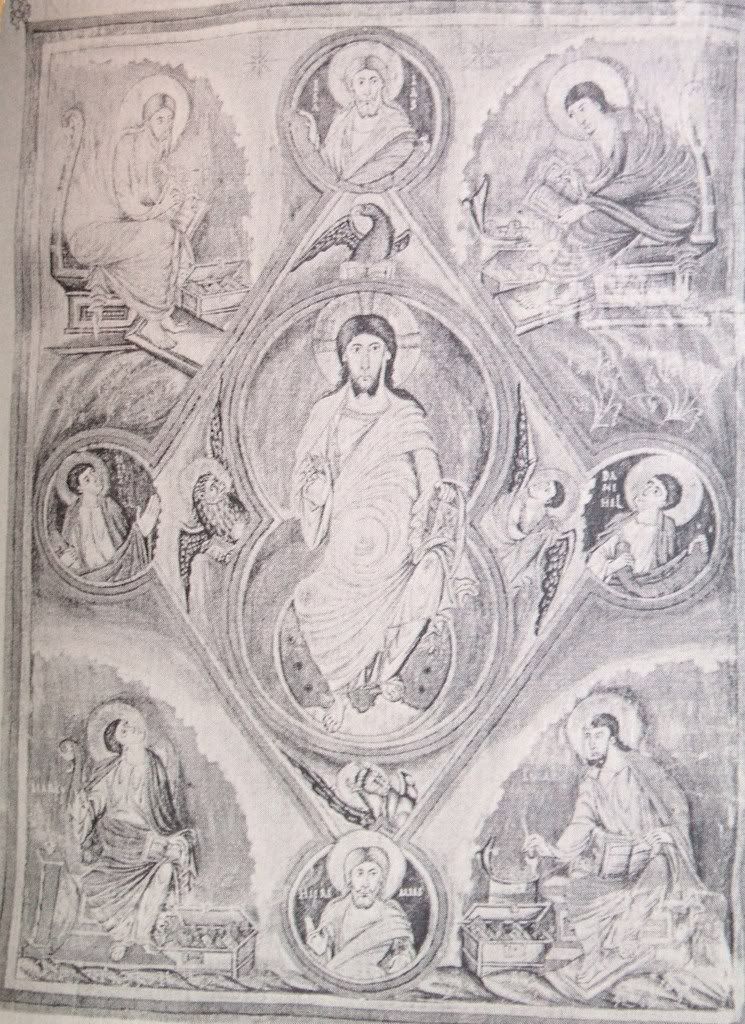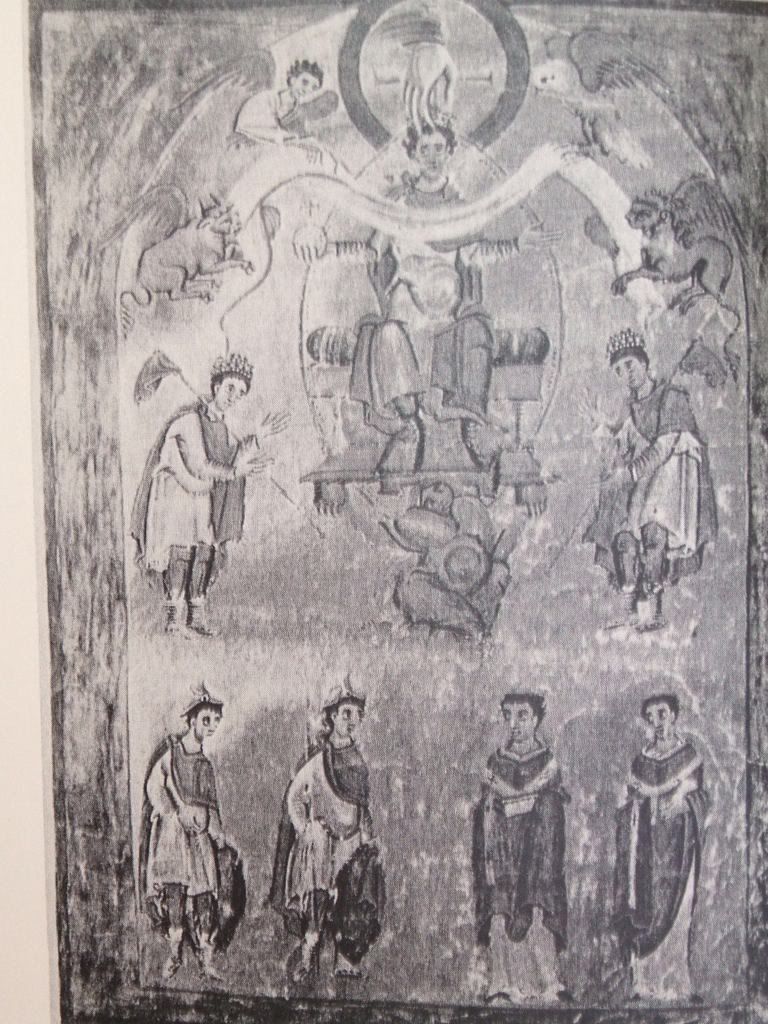le pendu
I've long assumed that the Angel, Lion, Ox, and Eagle on the TdM World card are the "four evangelists".
Here's Jean Noblet:

Wikipedia says :
I've also known that the symbols are much older than that, and probably come from the zodiac.
Wikipedia says this about the "Tetramorph":
So I've heard it argued that these are images of the Zodiac, not the evangelists.
But I wonder. Are the signs of the zodiac ever shown with Halos?
Here is the Sforza Castle, Jacques Vieville, Jean Noblet, and Nicholas Conver.
All of them show the four halos, except Conver who shows the Ox without.
So my question is.. can these be anything but the four evangelists?
Here's Jean Noblet:

Wikipedia says :
In iconography the evangelists often appear in Evangelist portraits derived from classical tradition, and are also often represented by the following symbols:
Matthew the Evangelist, the author of the first gospel, symbolized by a man...
Mark the Evangelist, the author of the second gospel, symbolized by a lion...
Luke the Evangelist, the author of the third gospel and the Acts of the Apostles, symbolized by a bull or a calf...
John the Evangelist, the author of the fourth gospel, symbolized by an eagle...
I've also known that the symbols are much older than that, and probably come from the zodiac.
Wikipedia says this about the "Tetramorph":
The most-developed of all foursome or fournesses in religious symbolism in Christianity is the tetramorph of the four evangelists. It originated from the Jewish prophet Ezekiel who whilst in exile in Babylonia circa 550 BCE used the symbolism of Babylonian astrology for his own prophetic purposes. Ezekiel describes his vision in which the likeness of four living creatures came out of the midst of the fire thus:
As for the likeness of their faces, they four had the face of a man, and the face of a lion, on the right side: and they four had the face of an ox on the left side; they four also had the face of an eagle. Ezekiel 1:10.
Ezekiel’s vision is based upon the astrology of the ancient Babylonians in which the constellations of the Zodiac (Greek for circle of animals) signs of Aquarius (the man/angel) Leo the Lion, Taurus the Bull and Scorpio the Eagle are represented as being a Throne for God Himself (called a Merkaba in Hebrew). Known astrologically as the Fixed Cross (with the substitution of the scorpion, a creature little known outside the Mediterranean basin and which was replaced early on by the winged eagle).
So I've heard it argued that these are images of the Zodiac, not the evangelists.
But I wonder. Are the signs of the zodiac ever shown with Halos?
Here is the Sforza Castle, Jacques Vieville, Jean Noblet, and Nicholas Conver.
All of them show the four halos, except Conver who shows the Ox without.
So my question is.. can these be anything but the four evangelists?



